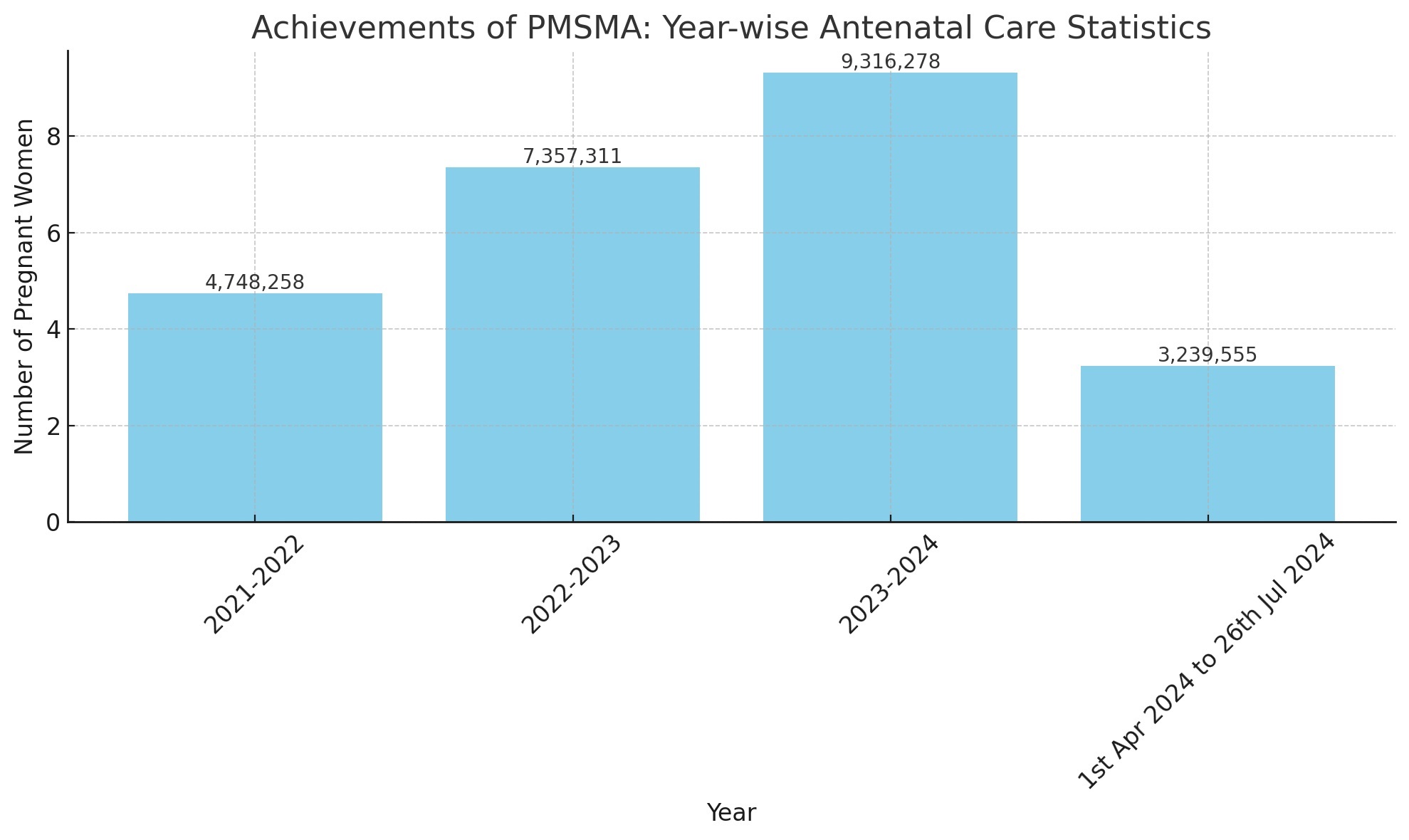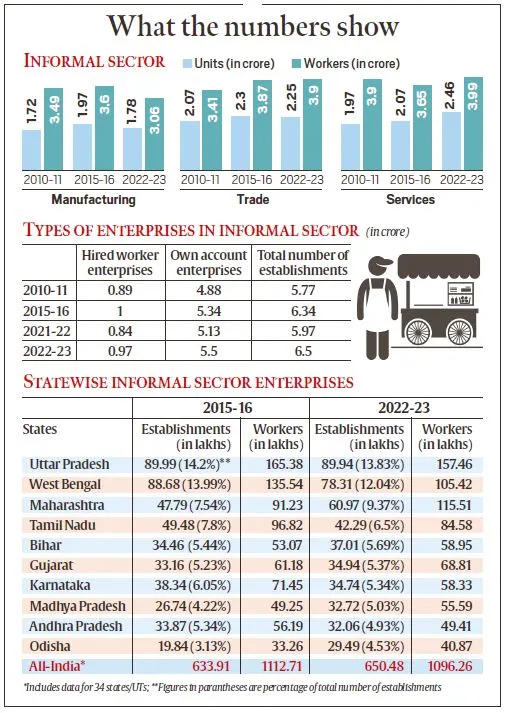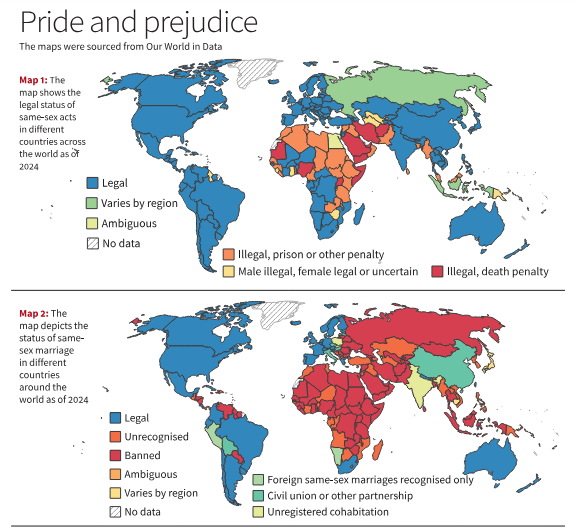| PYQ Relevance: Mains: Q1 Critically discuss the objectives of Bhoodan and Gramdan movements initiated by Acharya Vinoba Bhave and their success. (UPSC IAS/2013) Q2 Can the vicious cycle of gender inequality, poverty and malnutrition be broken through microfinancing of women SHGs? Explain with examples. (UPSC IAS/2021) |
Note4Students:
Mains: Reason behind the inequality in India ;
Mentor comments: Inequality in India is characterized by significant disparities in wealth and income distribution. The richest 1% of the population owns over 58% of the nation’s wealth, while the bottom 50% holds merely 3%. Factors contributing to this inequality include caste, gender, and regional disparities. Women, for instance, earn 34% less than men and own only 2% of agricultural land despite comprising 42% of the agricultural workforce. The COVID-19 pandemic exacerbated these inequalities, with the wealth of billionaires increasing while poverty deepened for many.
Let’s learn!
__
Why in the News?
In their March 2024 study, “Income and Wealth Inequality in India, 1922-2023: The Rise of the Billionaire Raj,” economists Nitin Kumar Bharti, Lucas Chancel, Thomas Piketty, and Anmol Somanchi report that in 2022-23, the top 1% of the population held 22.6% of the total income and 40.1% of the total wealth in India.
A case of gross disproportion as per study
- Income and Wealth Distribution: In 2022-23, the top 1% of India’s population received 22.6% of national income and owned 40.1% of total wealth. This marks the highest levels of inequality recorded since 1961, indicating a stark concentration of wealth among the richest individuals, with the top 0.1% earning nearly 10% of national income.
- Comparison with Historical Context: The report suggests that the current inequality levels are greater than those during the British colonial rule, with the top 10% of the population owning 65% of total wealth. In contrast, the bottom 50% holds only 6.4% of total wealth and earns 15% of national income.
- Wealth of the Wealthy: The wealthiest 10,000 individuals possess an average of ₹22.6 billion, which is approximately 16,763 times the average wealth of an Indian.
- Start of inequality: The rise in inequality began in the 1980s with economic liberalization, accelerating after the 1991 reforms. The share of the bottom 50% in national income dropped significantly, while the income share of the top 10% increased dramatically during the same period.
The reason behind the inequality:
- Economic Liberalization: The economic reforms initiated in the 1990s led to rapid growth in certain sectors, particularly in urban areas, while rural and less developed regions lagged behind.
- Lack of Inclusive Growth: Economic growth has not been inclusive, with benefits disproportionately favouring certain sectors and geographic regions. For instance, the service sector, which significantly contributes to GDP, is concentrated in a few states like Maharashtra and Karnataka.
- High Unemployment and Underemployment: A lack of sufficient job creation and the prevalence of underemployment contribute to low productivity and income levels among the majority of the population
- Caste and Gender Discrimination: Social stratification based on caste and gender continues to limit access to opportunities for marginalized groups. For example, upper castes hold a disproportionate share of wealth, while Scheduled Castes and Scheduled Tribes have significantly lower ownership of assets.
- Educational Disparities: Access to quality education is uneven, with lower-income groups often lacking the resources to attain higher education, which is crucial for upward mobility. This educational gap perpetuates income inequality.
- Regional Imbalances: Certain states in India are significantly more developed than others, leading to disparities in income and wealth distribution. For instance, five states own about 50% of the country’s total wealth, Maharashtra (17% of the country’s wealth share) Uttar Pradesh (11.6%), Kerala (7.4%), Tamil Nadu and Haryana
Way forward
- Redistribution of Wealth: The funds generated from increased taxation should be directed towards social programs that improve access to education, healthcare, and nutrition for lower-income groups.
- Invest in Rural Development: Need to focus on targeted investments in rural areas which can help bridge the gap between urban and rural economies.
- Promote Quality Education and Skill Development: Expanding access to quality education and vocational training for marginalized communities can empower individuals and enhance their employability.
![[5th August 2024] The Hindu Op-ed: The psychology of extravagance](https://dev.civilsdaily.com/wp-content/uploads/2024/08/5-Aug-1568x882.jpg)

![[29th July 2024] The Hindu Op-ed: Recasting care models for mental illness, homelessness](https://dev.civilsdaily.com/wp-content/uploads/2024/07/29-july-1568x882.jpg)
![[22nd July 2024] The Hindu Op-ed: Focus on female employment to counter unemployment](https://dev.civilsdaily.com/wp-content/uploads/2024/07/22-july1-1568x882.jpg)

![[2nd July 2024] The Hindu Op-ed: Glossing over unemployment, its high electoral price](https://dev.civilsdaily.com/wp-content/uploads/2024/07/2-july-1568x882.jpg)
